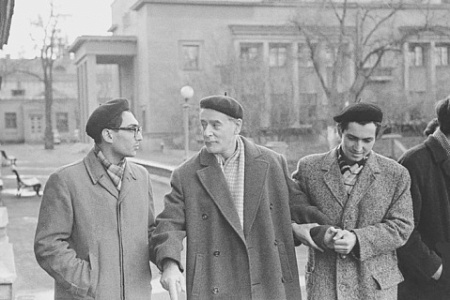
In the rigid landscape of the Soviet Union, Nobel laureate Lev Landau existed as a profound paradox: a scientific genius whose mind was indispensable to the state, yet whose spirit remained defiantly free. While his contributions to theoretical physics were monumental, it was his life outside the laboratory that presented a unique challenge to the Soviet authorities, a story of an individual who lived by his own rules within a system that demanded absolute conformity.
By the late 1950s, the state’s patience was wearing thin. A 1957 secret report submitted to the Central Committee of the Communist Party characterized Landau as a staunch anti-Soviet figure. The document went further, attacking his personal life as “sordid” and “alien to Soviet morality.” Yet, in a striking display of Cold War pragmatism, no action was taken. The Kremlin, deeply invested in its scientific and military supremacy, understood that Landau was simply too valuable to punish or silence. His genius granted him a unique immunity, forcing the state to tolerate the very non-conformity it sought to crush in others.
This freedom was evident in every aspect of Landau’s life. He famously applied the principles of physics to everyday matters, creating elaborate and witty classification systems for everything from male archetypes to female beauty, which he theorized had a point of maximum appeal at a specific distance. He openly flouted the drab, puritanical expectations of Soviet society, championing bright, revealing clothing for women and delighting in lively company, much to the chagrin of party officials. He was a force of nature that the system could neither contain nor fully comprehend.
Tragedy struck on a frozen Moscow road on January 7, 1962. A devastating car crash left Landau clinging to life, his injuries so severe that he remained in a coma for weeks. What followed was a remarkable, and rare, moment of international unity that defied the Iron Curtain. As Soviet doctors fought to save him, the global scientific community mobilized. Specialists from Canada, France, and Czechoslovakia flew to Moscow, bringing scarce medicines and collaborating with their Soviet counterparts in a singular mission to save one of the world’s greatest minds.
That same year, unable to travel to Stockholm, Landau was awarded the Nobel Prize in Physics in a unique ceremony held in his hospital room by the Swedish ambassador to Moscow. The event was a powerful symbol of his international stature, a recognition that transcended the deep political divisions of the era. Although the international effort saved his life, the accident had irrevocably broken his connection to science. He lived for six more years, a shadow of his former self, calling himself a “permanent invalid.” His death on April 1, 1968, was a profound loss not only for Soviet science but for the world, marking the end of a life that served as a testament to the complex interplay between genius, state power, and the bonds of a global community.
